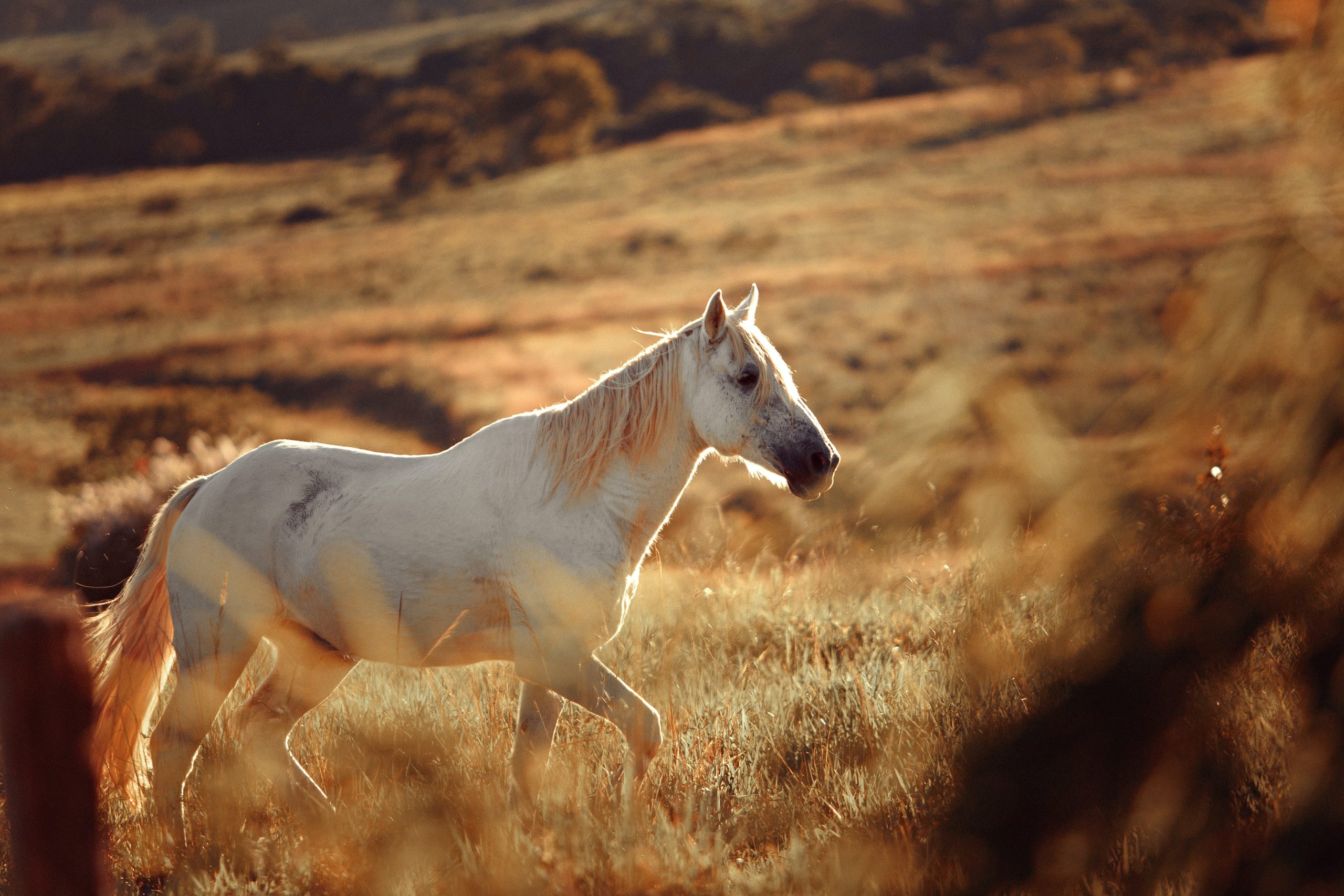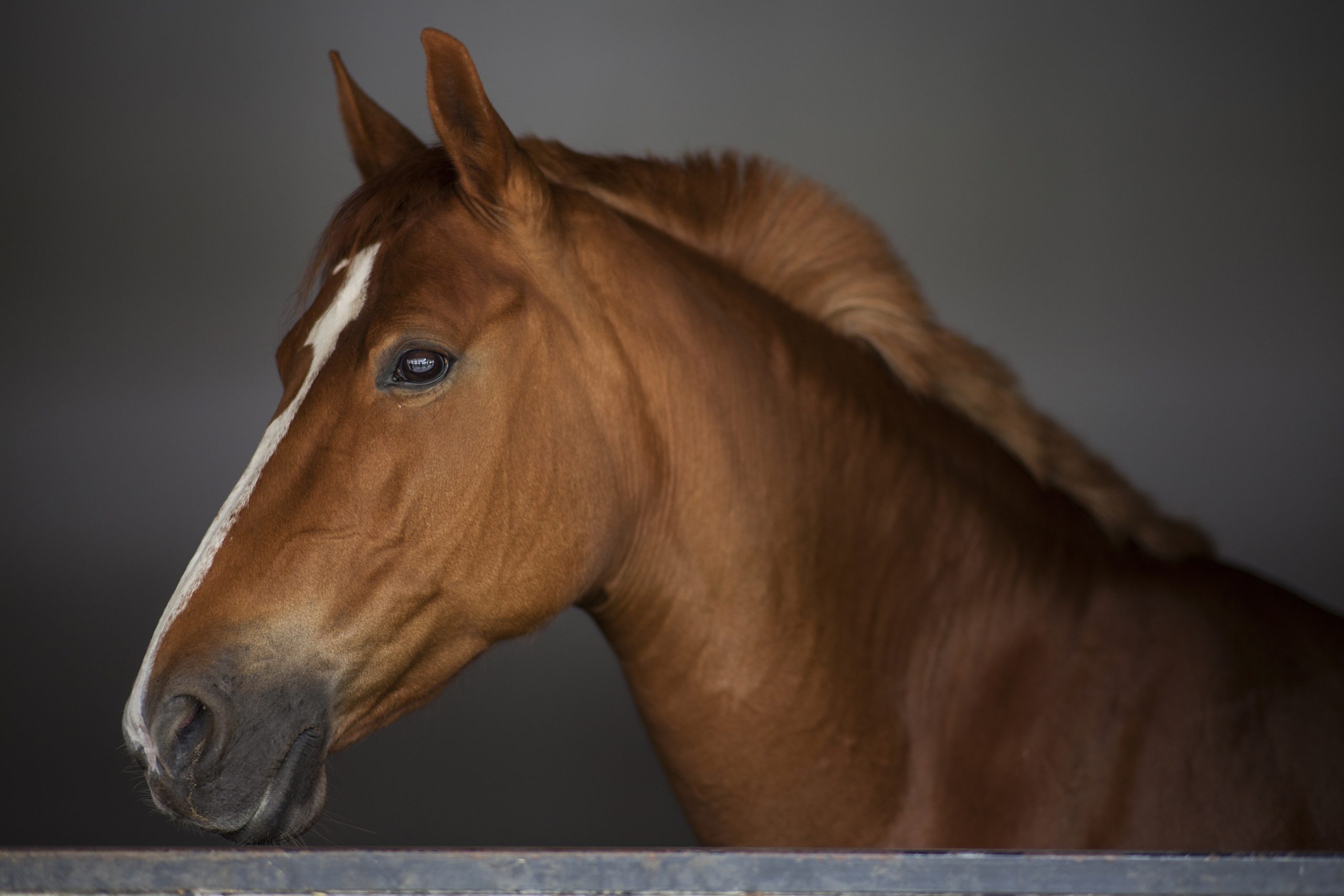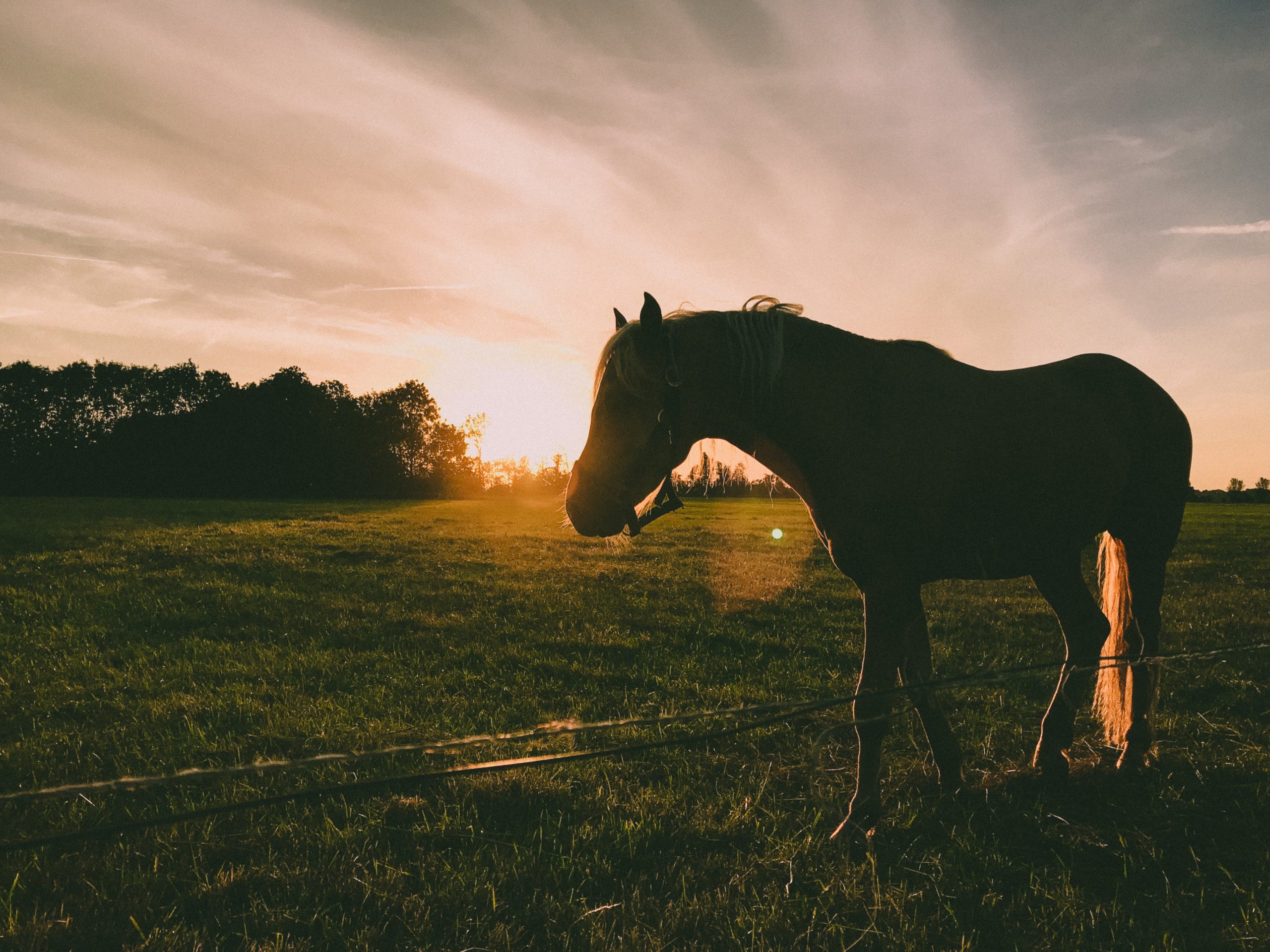The word laminitis elicits fear among horsemen because many associate it with the end of the horseu2019s career and sometimes the horseu2019s life. Laminitis is a catastrophic syndrome that should always be treated as an emergency. Recent research and new techniques used to treat this condition now make it possible to save horses that might have died. A diagnosis of laminitis is no longer a death sentence.
What is laminitis?
Simply put, laminitis is an inflammation of the laminae, the sensitive tissues that connect the hoof wall to the coffin bone and other structures of the horseu2019s foot. The laminae play a major role in stabilizing the bones inside the foot. When inflammation occurs, the integrity of this crucial bond is often compromised, leading to serious damage to bones and soft tissues.
Laminitis can strike any horse regardless of its breed, use, or activity. It mostly occurs in mature horses and is rarely found in horses less than one year old. In my many years of practice, I have never seen a case in which laminitis is the primary disease; it has always been secondary to another disease process such as colic or trauma.
Recent research has provided greater insights into what is actually happening to the blood supply within the foot and how that affects the integrity of the structure during acute and chronic laminitis.
Understanding the anatomy and physiology of the normal and laminitic foot gives the treatment team (consisting of a veterinarian, a farrier, and the owner) the means to reverse the damage incurred during a laminitic episode. Inflammation of the laminae leads to ischemia, which is simply cell death. The cells die because they cannot obtain nutrients from the blood supply. The blood is shunted away from the foot by a mechanism that is not fully understood. However, it is known that reduced blood supply sets the stage for inflammation and subsequent cell death, which destroys the intricate network of laminae that suspends the horseu2019s weight between the coffin bone and the hoof wall.
Laminae act like the tiny hooks and grippers in Velcro strips when they have been fastened together. One side is attached to the bone, the other side to the wall. If all of the laminae were placed flat, their surface area would approximately equal the size of a tennis court. For this reason, a horse can suffer from laminitis and have a very mild insult to a very small area of the total surface.
Another laminitic horse might have a very severe insult that wipes out the majority of this laminae within hours, leading to a catastrophic situation in which the hoof wall separates from the foot.
Basic steps of progressive disease
Laminitis can be triggered by a variety of factors. Careful attention to anything that might be a contributing factor and the presentation of this information to the veterinarian creates a history that may be essential in the diagnosis and treatment of the horse. A thorough history could have key implications on the diagnosis as well as the prognosis. Common primary problems that often precede laminitis are:
- Overeating grain or grass, especially by obese animals
- Prolonged high fever
- Severe colic
- Retained placenta for more than 12 hours
- Pneumonia
- Pleuritis
- Colitis caused by salmonella
- Stress brought on by constant movement, shipping, showing, loss of sleep, water deprivation, or dehydration
- Unilateral lameness brought about when a horse suffers a severe injury in one leg or foot and places excess weight on the opposite limb
- Road founder or excessive concussion for a prolonged period of time
- Accidents or mechanical trauma
- Water founder or when an overheated horse is allowed to tank up with water
- Mastitis founder affecting lactating mares
- Enteritis/colitis or endotoxic absorption following surgery
- Postoperative colic laminitis
What are the signs of laminitis?
The most common sign of laminitis is lameness. If the laminitic horse can be persuaded to walk, it moves with a shortened stride, with each foot quickly placed back on the ground. Standing still, the horse appears to have its feet ‘nailed to the floor’ in the parlance of old-time horsemen. The characteristic stance of a laminitic horse includes hind feet brought forward under its belly in an effort to get most of its weight off the front feet, which are stuck out in front of its normal center of gravity. If all four feet are affected and the horse is in severe pain, it might lie down and be reluctant to rise.
Upon closer examination, the horse may have a bounding digital pulse. Always check the pulse before moving the animal, because even in a healthy horse, a few steps can increase the pressure within the blood vessels. There are cases of severe, acute laminitis in which the pulse is very faint or not detectable at all. Most have warmer than normal feet. In rare cases, however, they can be ice cold. Therefore, it is necessary to use other clinical signs if a case of laminitis is suspected. The most obvious sign is acute lameness or signs of pain.
Even if the horse does not ultimately have laminitis, its pain requires prompt attention. A veterinarian and the horseu2019s farrier should be asked to see the horse right away. The farrier should be included because he or she knows the horseu2019s feet best and can be extremely helpful in telling the veterinarian what changes might be noticeable.
The quicker help is obtained for the horse, the greater the chances that the horse will recover. Help means treating the acute inflammatory stage as well as the inciting cause, and mechanically reversing the forces that are working to destroy the vital, sensitive areas inside the foot. It is crucially important for the vet and farrier to work together at this point to treat this potentially devastating disease. Therapy that is initiated the moment the horse shows the slightest sign of laminitis increases the window of response time so critical to the horseu2019s recovery.
Looking for clues
Early treatment is designed not only to attack the syndrome but to prevent secondary mechanical destruction. Review what might have prompted the onset of laminitis while waiting for the arrival of the veterinarian and the farrier.
Consider what occurred during the previous 48 to 72 hours. Did the horse travel and have a stressful trip? Did it have a high fever or signs of stressful breathing? Has it been exposed to conditions that might precipitate pneumonia or some other respiratory disease? Has one or more of its limbs become swollen for no apparent reason? Has the horse recently received an influenza vaccination or any other kind of injection? Has the horse been given corticosteroids?
Although treating horses with corticosteroids can have very beneficial effects, caution should be taken. A small percentage of horses have developed laminitis within a few hours to a few days following corticosteroid therapy. Many veterinarians believe that there is a direct correlation. Even though the incidence is quite low, I am among the veterinarians who believe there is an inherent risk in such treatments and therefore advise caution to clients wishing to use corticosteroids.
Has the horse inadvertently consumed a much larger amount of grain than it normally eats? Many horses require tremendous amounts of grain to maintain peak condition, whereas others might need only a handful. When a horse manages to break into a feed room, it might eat only what it needs while others will gorge until they have consumed all of the grain. Horses that devour too much grain can present a serious problem. A veterinarian should be called immediately as swift action cannot only prevent gastritis and subsequent laminitis, but it might also save the life of the animal.
Other things to consider
When was the horse last shod? Did the farrier have any problems or comments concerning the feet? The farrier most likely knows the unique characteristics of an individual horseu2019s feet better than does the owner. This knowledge can be invaluable when assessing the degree of damage. Farriers might look for increased sensitivity around the coronary band itself, such as swelling, discharge, or moisture that might indicate serum leakage or a possible abscess; an abnormal ledge formation or an abnormally distinct margin to the hoof wall; or increased sensitivity over the sole and toe area detected through the use of a hoof tester.
Has the conformation of the sole changed? Is the sole sagging? Does it seem to be fuller? Is the sole bruised? The farrier might pull the shoe to better inspect the area under the shoe for hot nails and other shoe-related problems. Findings become invaluable in helping the veterinarian interpret the visual as well as radiographic evidence of a potential problem.
The veterinarian will assess the overall health of the animal in an effort to rule out underlying metabolic problems that could have precipitated the acute signs of pain. It is extremely important to address the seat of the problem if it can be diagnosed.
When nothing out of the ordinary has occurred, consider whether the horse has experienced stress. This could be stress from traveling, any change in routine, or changes in feed or water. Veterinarians have long acknowledged a link between stress and the onset of laminitis.
Certain disease syndromes can precipitate laminitis, but it is difficult to relate known causes to a particular case. Owners and trainers are sometimes distraught because they cannot pinpoint a precise cause for an episode of laminitis. Knowing the reason is not essential to resolving the problem. It can be a helpful indicator to what lies ahead, but close observation of the horse, radiographs, and response to therapy is more valuable than knowing what caused it.
Management and prevention
Treating laminitis is one thing, but preventing it is quite another. The mechanism that triggers this devastating disease syndrome is unknown. However, being aware of several other clinical indications that usually precede laminitis helps in spotting high-risk patients. This knowledge gives some insight into prevention.
Laminitis that is directly associated with obesity is easy to prevent. The following is a great motto for maintaining healthy horses – ‘the fat ones get less and the thin ones get more’. How simple this might seem. There is a great tendency for owners to overfeed horses. The owners express their confidence that their heavy animals are not only the best of the breed, but the healthiest. Apparently, it is human nature to want to provide for our horses as we do for our children. Unfortunately, providing absolutely everything we think the horses might want is usually very different from what they actually need.
Maintaining horses on lush pastures with a balanced diet and adequate caloric intake poses a totally different problem than maintaining a proper diet for horses living in more arid areas. Lush pastures can yield up to 35% protein for several months of the year. Most people are totally unaware of the richness of their pastures. Even worse, there is no completely accurate means of knowing how much grass a horse eats in a 24-hour period.
I feel there is a worldwide tendency for people to over provide food for their horses. Many broodmares and stallions routinely carry more than 200 pounds of excess weight, and these horses should be considered at high risk for laminitis. An unbiased view should be taken of every feeding program, and then each individual horse should be considered. Scales or body tapes, reasonably accurate for judging weight, are helpful, or the truck scales at the local feed dealer can be employed to keep a handle on the horseu2019s weight so that changes can be caught early. Exercise programs should also be evaluated to determine if they match the feeding program for each horse.
Laminitis caused by opposing limb breakdown also can be prevented in many instances with proper management. The injuries that can trigger opposing limb founder, more correctly called unilateral laminitis, are:
- Any injury that will require more than two weeks to heal
- Deep puncture wounds to the navicular area
- Extensive fractures of the first, second, or third phalanx
- Fetlock breakdowns and shattered sesamoids
- Unilateral paralysis
- Complicated septic lower joints and/or tendon sheaths.
Any horse that is persistently lame for three to five days quickly becomes a high-risk candidate for laminitis. Septic joints, particularly hocks and stifles, seem to predispose the foot on the opposing limb to laminitis. It sometimes occurs in the previous ‘sound’ leg within days of the first signs of pain or lameness in the ‘unsound’ leg.
In such cases of truamatic laminitis, the laminae become dysfunctional due to lack of blood flow. Venograms of normal feet have shown a marked absence of contrast throughout the lamellar vessels when the foot is bearing weight at the time the dye is injected. Apparently the weight of the horse is precariously balanced between the deep flexor tendon and the laminae. Once loaded, the laminae stretch to their normal physiological limit, which apparently restricts normal blood flow.
When an injured horse stands planted on its sound foot for endless hours or days, its body weight shuts down delivery of adequate nutrients to the laminae of the good foot, which will soon become dysfunctional. Horses that constantly shift back and forth from one leg to the other are much less likely to have laminitis than those that cock the unsound leg and stand like that all day. Proper management of such cases can prevent opposing limb laminitis in the majority of cases. Reducing tendon pull at the very onset of the injury can help prevent ischemia that causes lamellar death.
Use of the Modified Ultimate Wedge provides the mechanics that can help prevent unilateral lameness. It is crucial to take into consideration the toe angle, heel angle, ventral angle, cup of foot, and overall quality and health of horn before beginning this corrective shoeing. Failure to do so can cause several problems.
I believe waiting until radiographic signs of laminitis are present before applying a mechanical aid seldom offers favorable results. The special shoeing mechanics can be too little, too late. Normally, the first six to eight weeks following an acute injury is the high-risk period, even if the original injury is responding quite favorably. Many times the foot balance on the injured leg goes off scale as well, putting these cases in double jeopardy.
After a shattered fetlock has been repaired surgically, the horse will have a tendency to develop a very low heel and tipped up coffin bone on the injured limb (caudal rotation), which often predisposes the horse to further problems as P1, P2, and P3 luxate. The severe luxation, or misalignment of these bones, can create abnormal stress on the supporting tendon. Unfortunately, this simply adds insult to injury, especially if the good foot has developed traumatic laminitis.
On the bright side, however, caudal rotation in the leg in which the surgery was performed can be prevented with proper therapeutic showing when addressed at the onset.
Most traumatic unilateral cases are classic sinkers. Seldom do they have more than a few degrees of rotation. They often have two centimetres of sinking.
Summary
Once laminitis is evident, treat it accordingly. Reverse the forces at play. Unfortunately, most horses that develop unilateral laminitis have severe damage when they are diagnosed. Swift, aggressive mechanics can pull many through, but treatment is risky and costly. Frequent radiographs and constant monitoring of the sound foot is quite important for a successful preventative program.





